Digital Poster
Aging Health & Disease
ISMRM & ISMRT Annual Meeting & Exhibition • 10-15 May 2025 • Honolulu, Hawai'i

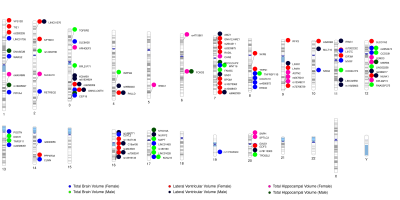 |
Computer Number: 129
1500. Genetic
Influences on Brain Aging: Analyzing Sex Differences in the UK
Biobank using Structural MRI
K. Ardila, A. Mohite, A. Addeh, A. Tyndall, C. Barha, Q.
Long, M. E. MacDonald
University of Calgary, Calgary, Canada
Impact:
This study highlights the importance of sex-stratified analysis in understanding the genetic associations with brain aging. Findings pave the way for future work on personalized treatments and preventative measures for neurodegeneration based on individual genetic profiles and sex-specific risks. |
|
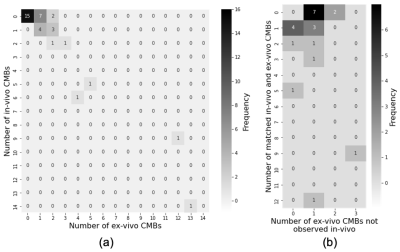 |
Computer Number: 130
1501. Cerebral
microbleeds in community-based older adults imaged both in-vivo
and ex-vivo: A clinical, MRI and pathology study
M. T. Yasar, G. Nikseresht, A. R. Ridwan, S. Zhang, D.
Bennett, J. Schneider, K. Arfanakis
Illinois Institute of Technology, Chicago, United States
Impact: We demonstrated that cerebral microbleeds (CMB)
detected in-vivo were also detected ex-vivo. Also, cognitive
impairment and cerebral amyloid angiopathy were associated
with higher risk of CMB occurrence prior to death in older
adults.
|
|
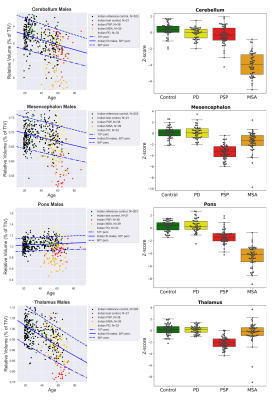 |
Computer Number: 131
1502. Establishing
Brain Reference Ranges in Indian Population: Comparison with
Westerners and Validation for Parkinsonism Differential
Diagnosis
P. B Venkategowda, T. Di Noto, K. Prabhu M, L. Bacha, B.
Mehta, S. Kulkarni, G. Franco Piredda, V. Benegal, J. Saini,
B. Holla, N. Sinha, R. Dawn Bharath, B. Maréchal
Magnetic Resonance, Siemens Healthcare Pvt. Ltd., Bengaluru, India
Impact: We release age-/sex-/ethnicity-specific
reference ranges built from Indian and Western controls. We
show notable variations highlighting the need for
population-specific reference modeling. Additionally, our
reference ranges enable the detection of specific atrophy
patterns in patients with different Parkinsonian syndromes.
|
|
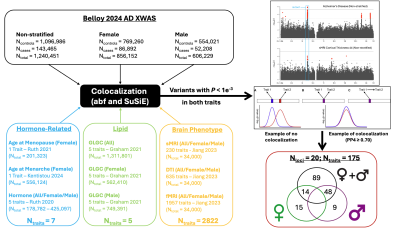 |
Computer Number: 132
1503. X
Chromosome Genetic Overlap of Hormone, Lipid, and Brain Imaging
Traits with Alzheimer’s Disease Reveals Novel Risk Genes
N. Cook, C. Yang, D. Reid, M. Belloy
Washington University, Saint Louis, United States
Impact: Integrating X chromosome genetic data for
Alzheimer’s disease (AD) with related traits, we uncovered
20 AD risk loci, including several showing sex-specific
effects. These findings provide new biological insights into
AD and highlight potential sex-agnostic and sex-specific AD
drug targets.
|
|
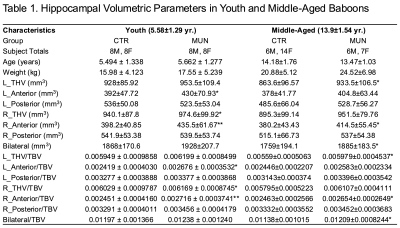 |
Computer Number: 133
1504. Maternal
Diet Restriction During Pregnancy Leads to Divergent Hippocampal
Enlargement Trajectories in Aging Baboon Offspring
B. Yang, W. Zhang, J. Li, H. Huber, C. Shively, L. Cox, P.
Nathanielsz, G. Clarke
University of Texas Health Science Center at San Antonio, San Antonio, United States
Impact: These findings suggest early-life nutritional
deficits can shape brain aging, offering a model to explore
interventions that support healthy cognitive aging in
individuals with prenatal and post-partum exposure to MUN.
|
|
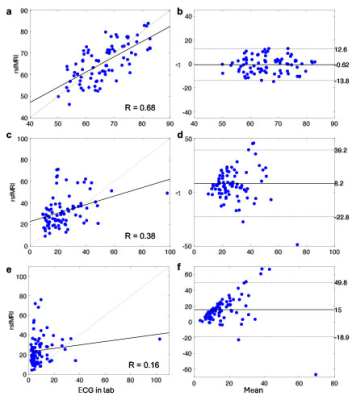 |
Computer Number: 134
1505. Comparison
of heart rate and heart rate variability metrics derived from
laboratory ECG signals and BOLD fMRI
T. Kim, M. Scudder, A. Marsland, P. Gianaros
University of Pittsburgh, Pittsburgh, United States
Impact: Using MRI data alone to assess HR enables more
comprehensive, integrated research on cardiac and brain
interactions. It may contribute to enhancing multimodal data
analysis and developing robust, non-invasive protocols for
studying cardiac and brain interactions in various
applications.
|
|
 |
Computer Number: 135
1506. Measurement
of tryptophan relaxation times in human brain using downfield 1H
MRS at 7 T
R. P. R. Nanga, N. Wilson, M. Elliott, S. Swago, W.
Witschey, R. Reddy
Perelman School of Medicine at The University of Pennsylvania, Philadelphia, United States
Impact: Reliable in vivo brain TRP relaxation measures
in normal subjects could help establish reference values and
also aid in utilizing it as a novel non-invasive in
vivo biomarker for various aging-related and
neuropsychiatric disorders.
|
|
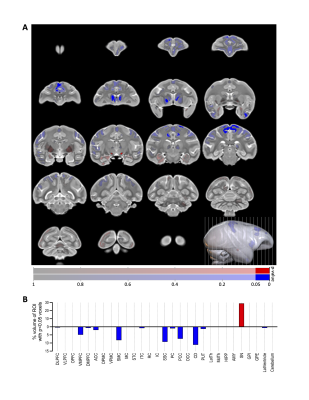 |
Computer Number: 136
1507. Effects
of Aging on Cerebral Morphology and Microstructure in Rhesus
Macaques
A. Grigorian, C. Kroenke, H. Urbanski, S. Kohama, A. Weiss
Oregon Health & Science University, Portland, United States
Impact:
Using a large age-diverse sample, we corroborate and extend previous findings of age-related brain changes in macaques, uncovering additional affected regions undetected with traditional imaging methods. This validates brain biomarkers in a translational animal model of normative human aging. |
|
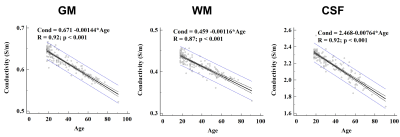 |
Computer Number: 137
1508. Brain
tissue conductivity decreases with age
J. Cao, J. Philby, I. Ball, C. Rae
Neuroscience Research Australia, Randwick, Australia
Impact: Brain tissue conductivity is a potential
biomarker for healthy aging, and the change over time is
expected to be considered in many applications.
|
|
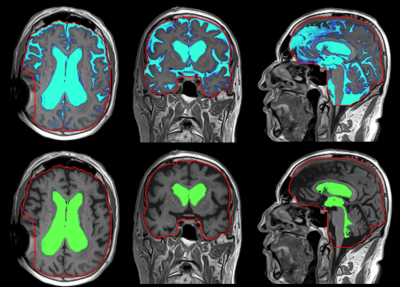 |
Computer Number: 138
1509. Automatic
ventricle segmentation using quantitative MRI
M. Warntjes, A. Tisell, C. Georgiopoulos, R. Holmgren
Center for Medical Imaging Science and Visualization (CMIV), Linköping, Sweden
Impact: A fully automatic ventricle segmentation, using
quantitative CSF maps as input, showed a high accuracy
compared to manual segmentation. This allows a far more
objective and accurate follow-up for Normal Pressure
Hydrocephalus patients than the current method of visual
inspection.
|
|
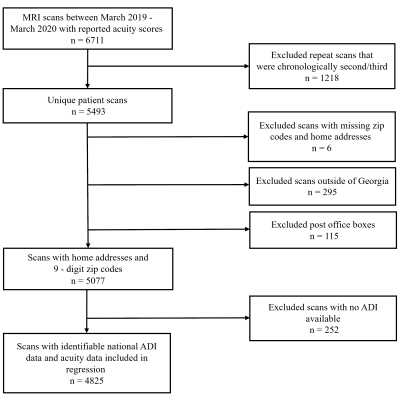 |
Computer Number: 139
1510. Impact
of socioeconomic status on acuity of brain MRI findings
I. Raghuvanshi, B. Risk, G. Sadigh, J. Allen, C. Fleischer
Georgia Institute of Technology and Emory University, Atlanta, United States
Impact: We observed neighborhood socioeconomic status
significantly correlates with acuity of brain MRI findings
when adjusting for race, insurance coverage, encounter type,
sex, age, and marital status, emphasizing the need for
solutions to reduce socioeconomic barriers to receiving MRI
scans.
|
|
 |
Computer Number: 140
1511. Automated
Estimation of White Matter Hyperintensity Burden from 2D T2w TSE
as an Alternative to 3D FLAIR
J. Disselhorst, V. Dunet, G. Allali, H. Kitzler, N. Menjot
de Champfleur, E. Le Bars, V. Ravano, T. Di Noto, T.
Hilbert, B. Maréchal
Siemens Healthineers International AG, Lausanne, Switzerland
Impact: Using 2D T2w Turbo Spin Echo (TSE) sequences for
white matter hyperintensity (WMH) volume estimation provides
a dependable alternative to 3D FLAIR, particularly when
quick scan protocols are necessary, but WMH estimation is
still needed.
|
|
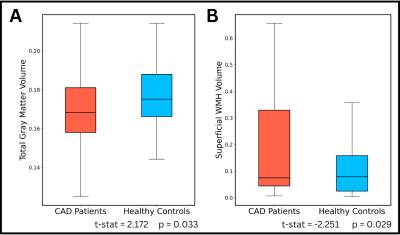 |
Computer Number: 141
1512. The
effects of aerobic fitness and BMI on brain volumes and white
matter hyperintensities in coronary artery disease
Z. Potvin-Jutras, S. Tremblay, S. Sanami, A. Rezaei, D.
Sabra, B. Intzandt, L. Wright, C. Gagnon, A.
Mainville-Berthiaume, O. Parent, M. Dadar, J. Iglesies-Grau,
C. Steele, M. Gayda, A. Nigam, L. Bherer, C. Gauthier
Concordia University, Montreal, Canada
Impact: These findings support the importance of
exercise and weight management in individuals with coronary
artery disease to maintain brain health, especially in the
middle cerebral arterial territory.
|
|
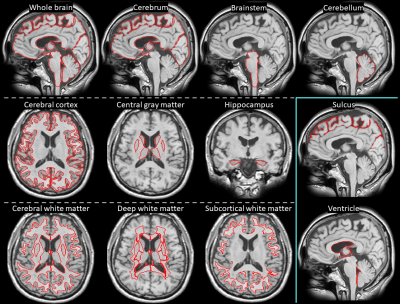 |
Computer Number: 142
1513. Mineral
intake and changes in intracranial structure volume in
community-dwelling adults
K. Akazawa, N. Kuriyama, E. Ozaki, D. Matsui, T. Koyama, Y.
Otani, K. Watanabe, K. Sakai, Y. Marunaka, A. Takada, T.
Mizuno, K. Yamada
Kyoto Prefectural University of Medicine, Kyoto, Japan
Impact: This result suggests a potential association
between brain volume change and zinc. Furthermore, this
study provides motivation to explore whether adequate zinc
intake is necessary, even when sufficient levels of zinc are
observed in blood data.
|
|
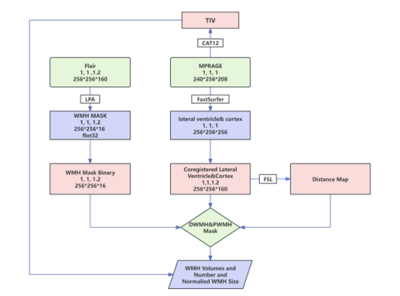 |
Computer Number: 143
1514. Deep
and Periventricular White Matter Hyperintensity Segmentation and
Their Relationship with Cognitive Decline and Vessel
Hemodynamics
G. Li, S. H. Chung, J. Tang, E. Joe, H. Chui, L. Yan
northwestern university, chicago, United States
Impact: By clarifying PWMH's specific association with
cognitive decline, our study emphasizes the importance of
considering PWMH lesion counts in clinical assessments,
potentially improving early diagnosis and management of
cognitive impairment in the elderly.
|
|
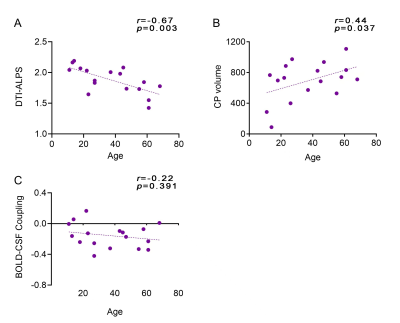 |
Computer Number: 144
1515. Comparative
Feasibility of Multimodal Imaging Indicators for Glymphatic
Function in Hematological Diseases: Significant Age Effects
J. Liu, Y. Zhang, Y. Chen, W. Wang, H. Chen, Y. Cao, Y.
Wang, Y. Huang, Y. Zhao, Z. Kang, D. Qin
The Second Hospital Of Dalian Medical University, Dalian, China
Impact: Imaging methods for evaluating glymphatic
function should be selected carefully, with special
consideration of age-related influences on DTI-ALPS index
and CP volume, particularly when samples involve a wide age
range.
|
The International Society for Magnetic Resonance in Medicine is accredited by the Accreditation Council for Continuing Medical Education to provide continuing medical education for physicians.